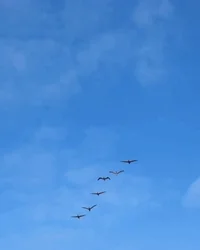By TODD McLEISH/ecoRI News contributor
 Rhode Island is the smallest state, but it plays an outsized role
in providing food and habitat for migrating birds traveling through the region
each fall.
Rhode Island is the smallest state, but it plays an outsized role
in providing food and habitat for migrating birds traveling through the region
each fall.
That’s the preliminary result of the first year of data collected
for the Rhode
Island Bird Migration Atlas. The information combines satellite data
of mass movements of birds during migration with field observations collected
along 10 transects scattered throughout the state.
“We’ve confirmed what we’ve always suspected: Rhode Island is a
very important stopover site for migrants. We’ve just never been able to put
numbers to it before,” said Charles Clarkson, the ornithologist who leads the
project on behalf of the University of Rhode Island and the Rhode Island
Department of Environmental Management.
Clarkson said the bulk of the birds migrating north along the
Atlantic flyway in the spring travel to the west of Rhode Island, whereas most
of those traveling south each autumn do so by crossing through the state.
“It seems like there is a funneling effect, with large numbers of birds heading south and avoiding going over open ocean,” Clarkson said.
“They’re not heading toward the beaches in eastern Massachusetts but are instead hooking west, passing through Rhode Island and along coastal Connecticut and New York before turning south along the New Jersey coast. They all seem to funnel through our state on a southwest trajectory.”
Among the other findings noted so far is the discovery that Rhode
Island has what Clarkson called a very protracted migration.
“We have just one year of data, but it seems that one of our
busiest migratory nights was the last night of data collection,” he said. “We
had huge pulses of birds moving through the state early and much later in the
migratory season, suggestive of a much more protracted migratory season in
Rhode Island than you might expect.”
No other state in the country has attempted to map and quantify
the migratory movements of birds, according to Clarkson. He said Rhode Island’s
small size makes the project more feasible.
Clarkson spent three days last month at the Aeroecology Laboratory at the University of Delaware, which
uses weather radar to analyze migratory bird movements.
He said weather radar “shoots a laser beam” into the sky, which bounces off an object and creates an image. The beam can also determine how quickly objects are moving in the sky, which enables scientists to differentiate between, say, wind-borne leaves and birds.
He said weather radar “shoots a laser beam” into the sky, which bounces off an object and creates an image. The beam can also determine how quickly objects are moving in the sky, which enables scientists to differentiate between, say, wind-borne leaves and birds.
“You can use these two metrics to get an idea of when, how quickly
and how many birds are moving through an area,” Clarkson said.
“When we looked at the data for Rhode Island, we saw that Rhode Island is used very heavily during fall migration relative to neighboring areas. Rhode Island seems like a hotbed of fall migratory movement by birds.”
“When we looked at the data for Rhode Island, we saw that Rhode Island is used very heavily during fall migration relative to neighboring areas. Rhode Island seems like a hotbed of fall migratory movement by birds.”
The radar data was combined with data collected by two researchers
regularly walking 10 transects during the migratory season.
They recorded every bird they saw and heard, as well as data about insect abundance as a measure of food availability. This on-the-ground data provided what Clarkson referred to as “bird-use days,” or the number of days during the migration period that birds used each site.
They recorded every bird they saw and heard, as well as data about insect abundance as a measure of food availability. This on-the-ground data provided what Clarkson referred to as “bird-use days,” or the number of days during the migration period that birds used each site.
“That gives us an idea of how long birds hang out at these spots,”
he said. “And the insect counts give us an idea of what fuel source is
available to them as they hang out. It also gives us an idea of turnover. If we
see 50 robins one day and two days later we see 50 robins and two days later we
see no robins, that gives us an idea of how long that flock hung out and
refueled before they picked up and moved on.”
While the data hasn’t yet identified particular species that use
Rhode Island habitats more than others, Clarkson said the state appears to be
an especially important stopover location for songbirds, such as blackpoll,
magnolia and black-throated blue warblers, that breed north of the state and
winter in the Tropics.
“We had plenty of the standard stuff, too — flocks of hundreds of
robins, huge flocks of grackles moving through,” he said. “And almost always in
those monospecific flocks you’d see Cooper’s hawks following them everywhere
they went. Inevitably we’d be able to predict when we’d see birds of prey based
on those monospecific flocks moving through.”
The migration atlas project will continue collecting data for two
more years, increasing the number of transects studied from 10 last year to 50
this year.
Rhode Island
resident and author Todd McLeish runs a wildlife blog.